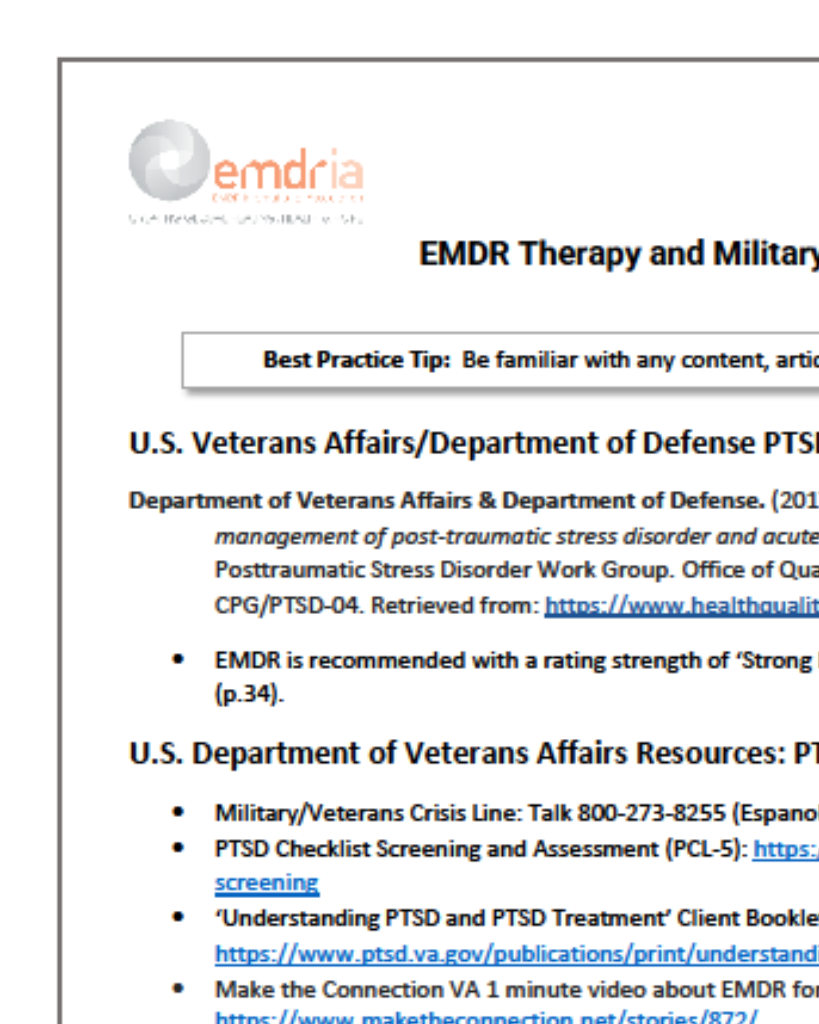„Eye movement desensitization and reprocessing“ (EMDR) in der Schmerztherapie
Eye movement desensitization and reprocessing (EMDR) in pain therapy
Article Abstract
“Hintergrund: „Eye movement desensitization and reprocessing“ (EMDR) ist eine evidenzbasierte Therapie für posttraumatische Belastungsstörungen (PTBS), die zunehmend auch in der Schmerztherapie Anwendung findet. Besonders bei Patient*innen mit traumatischen Vorerfahrungen zeigt sich, dass EMDR einen vielversprechenden therapeutischen Zugang bieten kann .
Ziel: Der Beitrag zielt darauf ab, die Verbindung zwischen chronischen Schmerzen und traumatischen Erfahrungen zu beleuchten sowie die zugrunde liegenden Mechanismen, Chancen und Grenzen von EMDR in diesem spezifischen Kontext darzustellen.
Material: Basierend auf einer selektiven Literaturrecherche werden zentrale Konzepte der EMDR-Therapie – wie der duale Aufmerksamkeitsfokus und die bilaterale Stimulation – sowie relevante Studien zur Schmerzreduktion zusammengefasst.
Ergebnisse: Studien zeigen, dass EMDR nicht nur psychische Belastungen reduziert, die zur Chronifizierung von Schmerzen beitragen, sondern auch die Schmerzintensität selbst verringern kann. Als mögliche Wirkmechanismen werden unter anderem die Beanspruchung des Arbeitsgedächtnisses sowie die Modulation neuronaler Netzwerke diskutiert.
Schlussfolgerung: Die Integration von EMDR in multimodale Schmerztherapieprogramme bietet eine vielversprechende Perspektive zur Verbesserung der Lebensqualität bei Patient*innen mit komplexen Schmerzstörungen. Dennoch unterstreichen die Ergebnisse, dass weitere Forschung notwendig ist, um die langfristige Wirksamkeit von EMDR validieren und den Einsatz in klinische Leitlinien integrieren zu können. Der zugrunde liegende Wirkmechanismus von EMDR ist nach wie vor nicht abschließend geklärt und stellt ein zentrales Ziel zukünftiger Forschung dar.
Background: Eye movement desensitization and reprocessing (EMDR) is an evidence-based treatment for posttraumatic stress disorder (PTSD) that is also increasingly being used in pain therapy. The use of EMDR can offer a promising therapeutic approach, particularly for patients with previous traumatic experiences.
Objective: This article aims to elucidate the link between chronic pain and traumatic experiences as well as to present the underlying mechanisms, opportunities and limitations of EMDR in this specific context.
Material: Based on a selective literature search, the article summarizes the central concepts of EMDR treatment, such as the dual attention focus and bilateral stimulation, and reviews relevant studies on pain reduction.
Results: Studies show that EMDR not only reduces psychological stress, which contributes to the chronification of pain but can also reduces the intensity of pain itself. Possible mechanisms of action discussed include the stimulation of the working memory and the modulation of neuronal networks.
Conclusion: The integration of EMDR into multimodal pain management programs offers a promising perspective for improving the quality of life in patients with complex pain disorders. Nevertheless, the results emphasize that further research is needed to validate the long-term effectiveness of EMDR and to integrate its use into clinical guidelines; however, the underlying mechanism of action of EMDR is still not conclusively clarified and represents a central goal of future research.”
—Description from publisher
Article Access
Purchase/Subscription Required
Vock, S., & Tesarz, J. (2025). „Eye movement desensitization and reprocessing“ (EMDR) in der Schmerztherapie. Der Schmerz. https://doi.org/10.1007/s00482-025-00890-w
Date
June 30, 2025
Creator(s)
Stephanie Vock, Jonas Tesarz
Topics
Pain/Chronic Pain
Publisher
Springer Nature
APA Citation
Vock, S., & Tesarz, J. (2025). „Eye movement desensitization and reprocessing“ (EMDR) in der Schmerztherapie. Der Schmerz. https://doi.org/10.1007/s00482-025-00890-w
Audience
EMDR Therapists, Other Mental Health Professionals
Language
German
Content Type
Article, Peer-Reviewed
Access Type
External Resource





